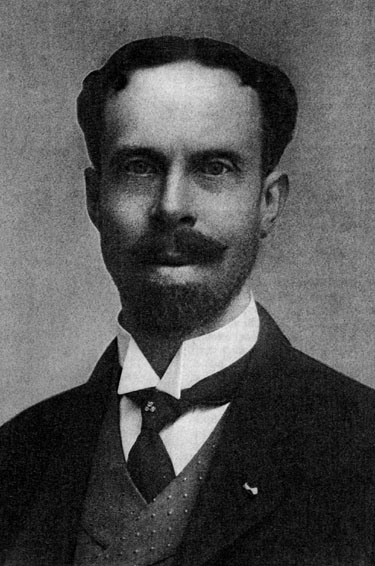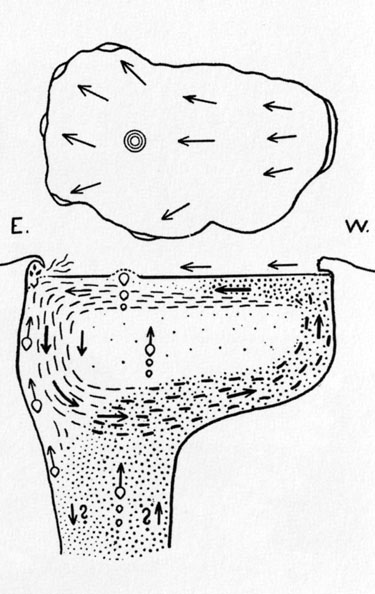
1867–1943
-
Geophysical Laboratory, research associate (1931-1943)
|
Frank Perret’s contributions helped to define volcanology in the the twentieth century. Yet, his early training and interests revolved around the development of electrical instruments for industrial applications. After leaving the Brooklyn Polytechnic Institute, where he studied physics, Perret joined and helped to organize the Elektron Manufacturing Company, a small firm that developed and manufactured electric equipment. At Elektron, he invented the Perret electric motor. In the early 1900’s, Perret went abroad to Italy for health related reasons, where he met Professor R. V. Matteucci, the Director of the Volcanological Laboratory of the Italian Government Observatory on Mount Vesuvius. Through this association, it is probable that Perret became increasingly interested in volcanology. With Professor Matteucci, Perret was given the opportunity to observe the 1906 eruption of Mount Vesuvius. He continued to study the volcano for the next fifteen years. According to Geophysical Laboratory staff member Mildred Giblin in her 1950 memorial to Perret, his monograph on Vesuvius was “the most graphic and complete account ever published on any volcanic eruption and its aftermath." Perret’s volcanological studies were not limited to Mount Vesuvius. He continued his observations throughout the early 1900’s, visiting such sites as Stromboli and Etna in Italy, Messina in Sicily, Tenerife in the Canary Islands, Kilauea in the Hawaiian Islands, and Sakurashima in Japan. |
||
|
|
||
|
||
|
|
||
|
When Mt. Pelee erupted in 1929, Perret couldn't resist traveling to the site and analyzing the mountain's volcanic activity. While there, he opened the Musee Volcanologique in 1932 as a gift to the town. Perret intended the museum to serve as both a memorial and a volcano education center. Perret permanently returned to the United States from his volcanological travels in 1940. Despite being seriously ill, he utterly refused to retire. Perret finally succumbed to sickness in 1943, while in the process of preparing data from his notebooks for publication. The book was finished by other investigators and was entitled Volcanological Observations. Mildred Giblin commended Perret’s work by stating that the “scientific contributions of Mr. Perret are unique in that no other volcanologist had the time and opportunity to make so thorough and varied observations on so many types of active volcanoes. He was a daring and sagacious researcher, indefatigable in his quest for information. He was a proficient and discerning photographer, and his publications are freely illustrated with fine pictorial records." |
||
|
|
||
|
References:
Further Reading:
|

